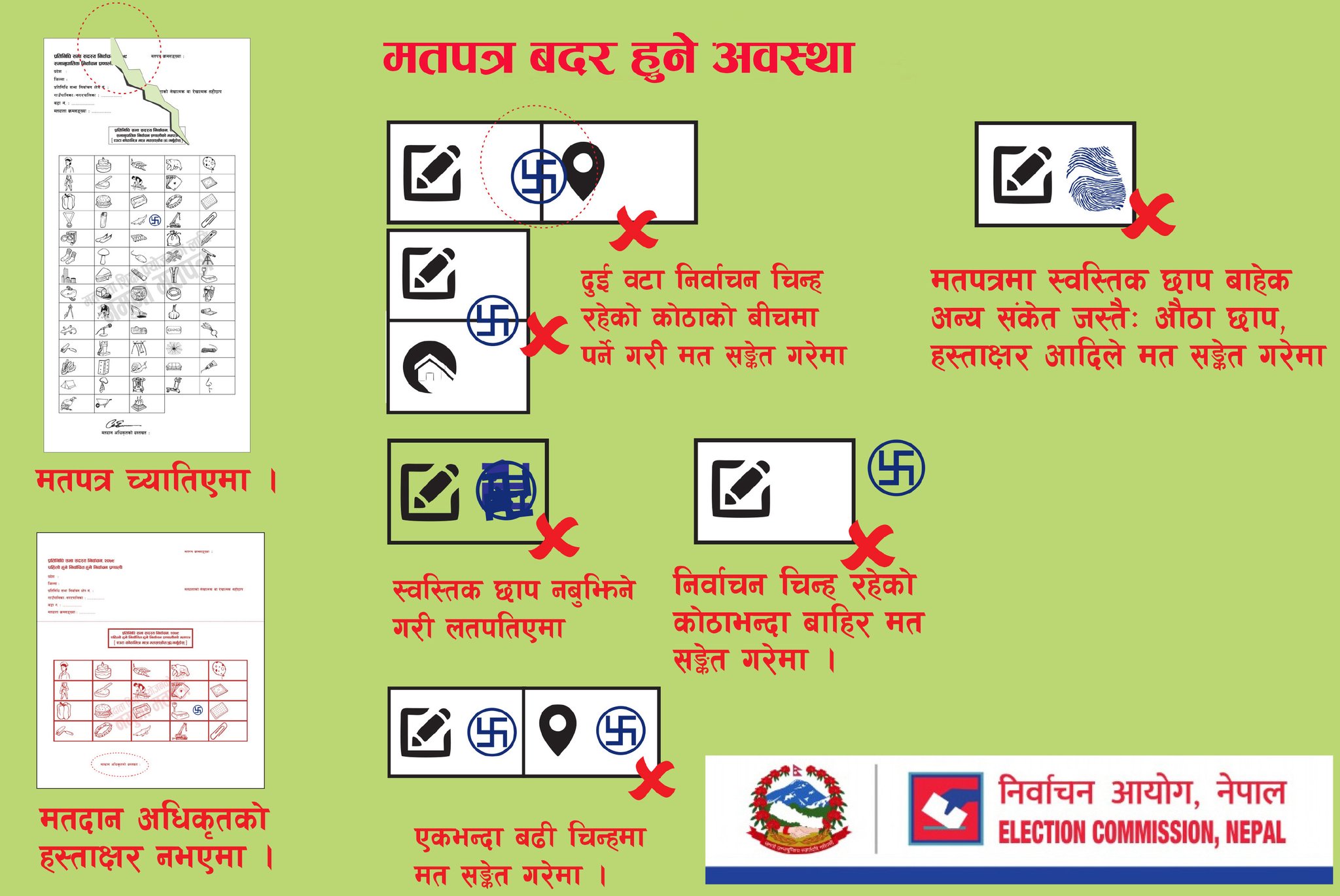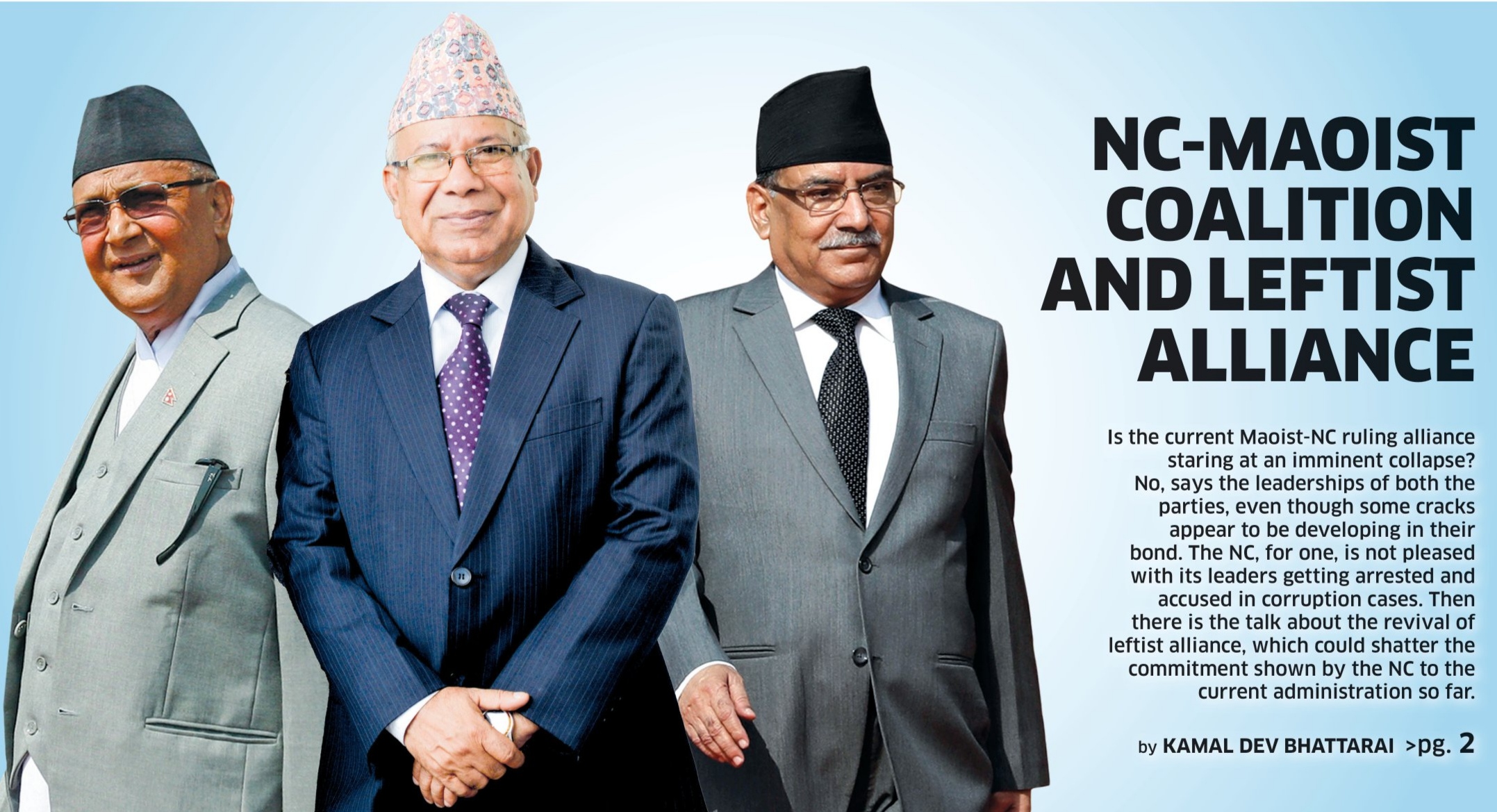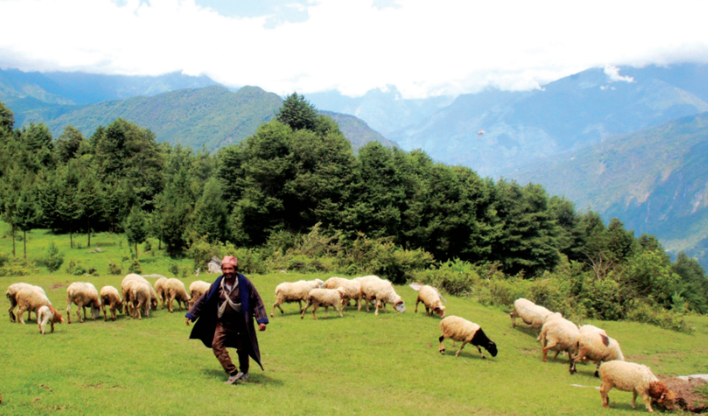Effects of tourism in Nepal’s mountains and how to mitigate them
It’s no secret that global warming is having a huge impact on our world, especially in our wild and natural spaces. Given Nepal’s reliance on the Himalayan mountains for tourism and the spiritual importance that they hold, the impact that global warming is having on these mighty giants is alarming. With glaciers melting and retreating, the mountains are becoming increasingly dangerous and unstable. In fact, a warning has been issued that if action is not taken, there may be no snow on the Himalayas as soon as 2035. That’s how critical the situation is. In recent years, the tourism industry in Nepal has taken a hit. Between poor Everest seasons, natural disasters and the pandemic, tourist arrival has been low. And what little tourism activity the country is seeing right now primarily revolves around Everest Base Camp treks and mountaineering, which account for around 75 percent of all Nepal tourism. Certainly, we’ve begun to see a considerable surge in tourist numbers post pandemic. But more tourists and travel costs also mean an increase in emissions from flights, impact on mountainous zones, and waste heaps left behind by visitors in wild spaces. While travel and tourism is good for the economy, it also harms the environment. So how can we continue to explore and stimulate the Nepali tourist economy at the same time? One way of finding this delicate balance is opting for eco-travel and carbon offsetting practices, which are already being adopted by some Nepali tour companies. With combined efforts from the expedition companies that rely on Everest for income and the Nepali government setting ambitious climate goals, there is a positive light on the horizon when it comes to ensuring sustainable travel policy in Nepal. Currently, Nepal’s climate goal is to reach net zero greenhouse gas (GHG) emissions by 2050, alongside a range of specific goals including ensuring that 90 percent of private and 60 percent of public vehicle sales are electric by 2030. The majority of the country’s climate goals are focused on domestic policies and on citizen-level, rather than tourism. However, there have been deliberations about moving the Everest Base Camp to mitigate the impact of climate change on the Khumbu Glacier. The melting glacier poses sizable risks not just for the environment, but for the tourist industry that relies on Everest treks and expeditions. Individually, there are many things that travelers can do to reduce their carbon footprint when traveling. One of the easiest ways to do this is to offset their carbon usage by adopting the plans set up by airlines and tour companies. Many airlines these days offer such plans at the point of flight purchase. You can also use third-party offsetting companies if your chosen airline does not offer the service. Also, a lot of tour companies provide carbon offsetting plans, or sustainable travel models that give back to the local community, environmental organizations, or social campaigns. This way, individuals can help mitigate their impact on the mountains and keep the economy going in a safe way. They can also participate in actions that leave no trace of pollution. This is a familiar concept to many outdoor adventurers but is often ignored by wider tourists. It’s the idea that if you’re hiking or exploring, you take all your wastes home with you or dispose them of safely. You leave nothing on the mountains, trails, or anywhere else that may be harmful to locals or the environment. Furthermore, online travel agencies, like Bookmundi, recognize that traveling is often at odds with environmental policy. Bookmundi calculates carbon emissions during a tour on the basis of four parameters: transport, accommodation, meals and activities. In addition, to ensure that every tour booked through the company, Nepal tours included, is 100 percent carbon neutral, they also offset carbon emissions that come from operating their website, servers and even using the website. Like Bookmundi, different tour operators can offer carbon offsetting services as a part of their overall tour prices, absorbing the cost in order to give travelers peace of mind. Another way to contribute towards preserving the environments of Nepal is to donate to Nepali charities and organizations while you’re traveling in the country. This way you know exactly where your money is going and the impact it can have. For example, if you’re climbing Everest or another mountain with Sherpa guides or porters, consider giving money to a charity or fund that supports Sherpas and their families. Although not directly an environmental impact, the increasingly melting glaciers are making Everest more dangerous to climb, with more treks being canceled every year, causing a lack of income. Sustainable travel is the only viable option that will allow travelers to keep exploring Nepal, while maintaining its beautiful and pure landscapes for the posterity.
Foreign policy challenges of new government
Issues related to foreign policy didn’t find much space during the election campaigns of major parties this time. Save the matter of map row with India, for which KP Sharma Oli of CPN-UML and Pushpa Kamal Dahal of CPN (Maoist Center) are competing to take credit for, all political parties are fundamentally on the same page when it comes to foreign policy. Only their priorities differ. This could be because the November 20 election is highly unlikely to produce a single-party majority government. Even big parties like Nepali Congress (NC) is contesting for only 91 seats under First-Past-the-Post (FPTP) category to create space for its four other electoral allies including Maoist Center. The main opposition, CPN-UML, which is fighting alone in most constituencies, is competing for over 140 seats. So, with a hung parliament the most likely scenario, parties are expected to cobble together a coalition government, led either by Sher Bahadur Deuba of Nepali Congress, Dahal of Maoist Center, or even Oli of UML. Who will become the next prime minister depends on how the power-sharing deal among the ruling five-party alliance pans out. With a coalition government in place, there is sure to be disagreement on Nepal’s foreign policy. If there is a government of NC and communist parties like Maoist Center, there will certainly be friction concerning ties with China. Congress, for one, stands against taking loans under China’s Belt and Road Initiatives (BRI) to finance infrastructure projects. In its party manifesto, Deuba’s party has also mentioned about the border dispute with China in the Humla district. A leftist party like Maoists, or UML for that matter— considered close to China—are unlikely to support NC in this regard. Both parties dismiss the alleged border dispute with China. So, it is going to be an uphill task for the coalition government to forge a consensus on how to deal with these issues. On issues related to India, NC and Maoists have different opinions. The Maoist party wants to push the agenda of the 1950 Peace and Friendship Treaty, though it has substantially eased its stance after joining the peace process in 2006. Still, the two parties have many other issues with India, where they do not see eye to eye, mainly due to their different ideological positioning. Similarly, while the Maoists and UML may have almost the same position on dealing with India on contentious bilateral issues, the former has a more anti-US posture. In their election manifestos, the two parties have repeated the same issues, such as maintaining a balanced ties with both India and China and sticking to non-aligned foreign policy. They however fall short of mentioning how they plan to deal with growing geopolitical tensions between China and the US. The next government will have a tough time maintaining blanched ties with China and the West. Chinese president XI Jinping, who has been elected for the third term, will likely adopt an even more aggressive posture in his neighborhood policy. Meanwhile, the US is set to expand its military and economic leg of its Indo-Pacific Strategy (IPS) in Nepal as a counterweight to growing Chinese influence in Nepal and much of South Asia. Of late, India, too, is growing wary of the American and Chinese influence in Nepal. Sources say New Delhi is desperate to revive its political influence in Kathmandu, which dwindled after 2018. Sanjay Upadhya, a US-based foreign affairs expert, says the challenge for the next government will be to manage relations within the increasingly unstable triangle of India, China and the US. NC has promised to engage with India and China diplomatically to address border-related disputes, while UML has injected greater rhetorical flourish in its intention to bring back Kalapani, Lipulek, Limpiyadhura and other territories. These are not easy issues, and the ruling and opposition parties will have the responsibility not to politicize the commitments based on domestic compulsions and conveniences, says Upadhya. Within this core challenge, he says Nepal will also have to focus on other issues, such as revitalizing the South Asian Association for Regional Cooperation (SAARC) for genuine collective self-reliance. There is also the imperative of grasping Nepal’s convergences and divergences from the experiences of neighbors like Pakistan, Bangladesh and Sri Lanka. Upadhya says it would be helpful to learn from those countries’ experiences on how best to navigate through the waters of international relations that are likely to become choppier in the days ahead. Pursuing economic and cultural diplomacy are all challenges that depend on the political stability Nepal could generate after the elections. Binoj Basnyat, strategic affairs analyst, says one challenge that the next government could confront is to convince the donor of national strategic benefits. Insufficiently defined national foreign policy will swing the big powers interests to prevail through weak political postures as well as political parties to remain in power, he says. Basnyat is of the view that foreign policy approach will be different with the new administration in Nepal.
‘The People on Platform 5’ book review: Mostly mundane with some good moments
The London Underground, popularly known as the Tube, is an utterly chaotic space, and not only during rush hour. You have to keep moving to reach your platform because everyone is in a hurry. Stopping to check the map or switching directions because you forgot which way you were supposed to go will earn you glares, headshakes, and murmurs. There’s a sense of urgency as people from students to office-goers use the tube as their primary mode of transport. The daily ridership is approximately 1.8 million. In Clare Pooley’s ‘The People on Platform 5’ we meet a wide range of characters who commute on a train from the Hampton Court area into London. There’s an old lady—Iona—who works for a magazine. She’s a lesbian who is extremely fond of her partner, Bea, and her pooch, Lulu, who travels everywhere with her. But lately, she has been worried that she’s about to lose her job. Then there’s Sanjay, a nurse who works in the oncology department. He is smitten by Emmie, another commuter on the train, but he is too shy to approach her. Piers is the hotshot banker with the ‘perfect’ life. He was once called ‘Midas’ at work because he was great at what he did. Now, he’s not sure this is the life he wants for himself. Martha, a teenager, has had a scandal and is being bullied at school. There are a few other interesting characters as well. Their lives collide when one of them almost chokes on his meal and needs medical help on the train. That incident somehow gets them talking to one another. As they get to know one another, they discover how their biases clouded their opinions and in the process are able to face their own demons as well (with, of course, a little help from their new friends). Though Iona is the protagonist who brings them all together, every character has been given his/her own sub-plot. And because there are so many of them, there’s a lot happening in the book. My problem with the book, however, is that it felt forced. The characters and their stories aren’t well developed and I couldn’t relate to any of them. This is despite the fact that the issues they deal with are real and important, from bullying and ageism in the workforce to mid-life crises and grief. What could have been a poignant story is all over the place because Pooley has taken on too much without being able to do justice to any of it. Three stars Fiction The People on Platform 5 Clare Pooley Published: 2022 Publisher: Bantam Press Pages: 400, Paperback
‘Monica, O My Darling’ movie review: A vintage-style Netflix release
There are times when a film’s name is enough to hook your interest and create expectations. This is what happened to me when I first heard about ‘Monica, O My Darling.’ And it’s no coincidence that the film’s name is inspired by the chorus section of the track ‘Piya Tu Ab Toh Aaja’ from the 1971 Bollywood film, Caravan. Adapted from the 1989 Japanese novel ‘Burutasu No Shinzou’ by Keigo Higashino, ‘Monica, O My Darling’ is a vintage-style crime thriller that can also share the label of dark comedy. Vasan Bala directs this neo-noir-themed movie that, despite running like a classic Bollywood whodunit, is refreshing and entertaining to watch. The movie begins with a murder of a worker at the Union factory and we don’t know who the killer is. Then we’re taken six months forward and introduced to Jayant Arkhedkar (Rajkummar Rao) who is being promoted to the board of directors for the company at its 50th-anniversary event. Robotics engineer Jayant, who is a rising star at Unicorn, comes from very humble beginnings but has successfully been able to impress the company CEO Satyanarayana Adhikari and his daughter Nikki Adhikari with whom he is engaged. At the same event, the CEO’s secretary Monica Machado (Huma Qureshi), introduces herself with a seductive cabaret-styled dance routine. We quickly learn that Monica is having an affair with Jayant and is apparently pregnant with his child. She tells Jayant she wants to raise the child and that he should pay for its upbringing if he doesn’t want her to spill the beans, potentially ruining his life. But Jayant is not the only one who is having an affair with and being blackmailed by Monica. Arvind Manivannan, from the accounts department at Unicorn, and Nishikant Adhikari, the son of Satyanarayana, are both being blackmailed by Monica. She has also told them she is pregnant with their child. The three men then get together to plot Monica’s murder and get rid of her to end their troubles. This is when things start getting really interesting in the film. A murder take place but it’s not Monica. And then another murder takes place and all the characters are engulfed by the fear of who’s going to be next. Jayant, as the main character, faces a few assassination attempts, and that only deepens the mystery. And when ACP Vijayashanti Naidu (Radhika Apte) comes into the picture to investigate the murder, the already captivating sequences churn into full-blown entertainment. There are many things to love about ‘Monica, O My Darling’. First, the screenplay is an almost perfect screen adaptation of the mystery novel. To take a piece of literature written in a whole different setting, in a different country, and context and then turn it around to suit your intended audience is a difficult task. The writing and direction of the film are on point. The film has an ensemble cast. These are not necessarily big names of Bollywood but faces that we’ve seen proving themselves time and again in Indian cinema. In this movie too, There are so many things to love about ‘Monica, O My Darling’. First, the screenplay is an almost perfect screen adaptation of the mystery novel. Rao is in his element and delivers yet again but there’s nothing extraordinary about him. Qureshi too looks natural and in sync with what’s happening around her. But it's Apte’s character as ACP Vijayashanti that leaves the audience astonished. As a powerful policewoman in charge of the investigation, she is great in the film, doing full justice to her character. You’ll have to watch the movie to witness the wildness that she unleashes on screen. With its retro Bollywood-ish title, I was expecting the film to be a bit more musical than it actually is. The film has only one title track called ‘Yeh Ek Zindagi’ that tries to emulate the disco/cabaret music of the 70s. The rest of the background score by Achint Thakkar is befitting the film’s theme, but again, expectations can be a cruel thing. Who should watch it? ‘Monica, O My Darling’ is as good as a neo-noir Hindi movie can get—there’s some mystery, some thrill, and a whole lot of style in the film. Anyone who loves a good watch, regardless of the genre or language, will definitely enjoy the movie. Rating: 4 stars Run time: 2hrs 9mins Genre: Thriller, mystery Actors: Rajkummar Rao, Huma Qureshi, Radhika Apte Director: Vasan Bala



















